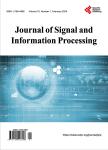An Improved Characterization of Small Scale Fading Based on 2D Measurements and Modeling of a Moving Receiver in an Indoor Environment
An Improved Characterization of Small Scale Fading Based on 2D Measurements and Modeling of a Moving Receiver in an Indoor Environment作者机构:Department of Electrical and Computer Engineering Oakland University Rochester MI USA Rice University Houston TX USA Department of Electrical and Computer Engineering Georgia Institute of Technology Atlanta GA USA
出 版 物:《Journal of Signal and Information Processing》 (信号与信息处理(英文))
年 卷 期:2016年第7卷第3期
页 面:160-174页
学科分类:0809[工学-电子科学与技术(可授工学、理学学位)] 08[工学]
主 题:Small-Scale Fading Gaussian Rayleigh Rician TWDP Maximum Likelihood
摘 要:Accurately characterizing the wireless small-scale fading channel has been a challenging task in the wireless communication era due to the surrounding environment. Therefore, this paper introduces a new technique to experimentally characterize the small-scale fading taking under consideration real environmental conditions. By conducting a two dimensional measurement while the mobile receiver is moving;a more accurate channel will be achieved. Two-dimensional measurement refers to collecting data from the receiver along the x and y direction. The two-dimensional measurement data contain far more information than a one-dimensional data collected. In order to represent the small-scale channel along with the real environmental conditions, new approaches are necessary to configure the two-dimensional system and to analyze the 2D data. The new approach this paper introduces for the characterization is that the measurements are conducted on a receiver while it is moving in a two dimensional manner, under different scenarios, Line-of-sight, Non-line-of-sight, and Two-wave-Diffuse Power. The experiment was conducted in a 7 meters long by 4 meters wide room, wherein the distance between the transmitter antenna and receiver is about 3 meters. Those scenarios represent different real-time conditions where obstacles differ from one scenario to another. For example, the line of sight scenario assumes there a clear line of sight between transmitter and receiver, Non line of sight assumes many obstacles between the transmitter and receiver, i.e. walls, cabinets, etc. and Two Wave Diffuse Power assumes a metallic reflector surrounding the receiver. The experiment showed more accurate results when compared to the one dimensional measurement that has been done in the past where receiver is moving in one direction and also receiver being fixed where a constructive and destructive interference is not captured. The two dimensional measurement technique, i.e. capturing data while receiver



